 History of the Kiev Camera and Optics Plant
History of the Kiev Camera and Optics Plant
1) Arsenal Plant at Kiev, 1949
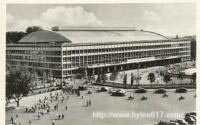
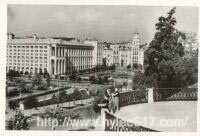
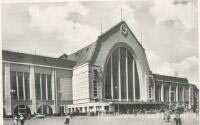
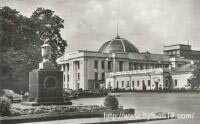
Kiev Ukraine 1962
- The Zeiss Ikon Contax was introduced in Germany during 1932 and was the most advanced 35mm system camera of its time. It was far more advanced than the Leica system as it incorporated a metal shutter of a slotted type with hinged metal curtains which moved vertically. As in most modern cameras it incorporated a bayonet lens mount and not a 39mm screw mount as in the Leica II which it was competing against. It also had a very long rangefinder base of 67mm. Production continued until 1961 except for the period between 1944 to 1952 probably due to the fact that the Russians took the design as spoils of war.
- The Soviet Union demanded camera technology and machinery from Germany, and the Allies agreed. The US 80th Division took the Zeiss plant at Jena and spirited away a number of documents and higher management and design staff and, of course, the Zeiss Lens Collection before the plant was turned over to the Soviets. Then, the Soviets gradually moved a lot of this gear to several Russian and Ukrainian sites. The Zeiss Ikon Contax was placed into production at Jena and this was shifted to the USSR by 1949. By that year, the Arsenal Plant at Kiev was producing exact copies of the Contax II camera and the Prewar Zeiss lens line for this system; the Contax III was added the following year. These are the Kiev II and III camera bodies which, bit by bit, are improved and modified into the Kiev 4A and 4AM which remained in production until 1986. (And this also explains why Zeiss Ikon wonks recommend Prewar Contax cameras as users: new parts are still being manufactured in Kiev!)
2) Kiev,1950s
- In the '50's, the Arsenal Plant in the Ukraine and the KMZ plant in Moscow began to produce a variety of designs which would eventually consolidate into the Kiev 88. There are some significant improvements in the Soviet design over the Swedish original but this lad, in any event, believes it to have been an outright theft, though perhaps a damnum absque iniuria, as Hasselblad had by then abandoned the design. Shell repeats the Party Line, that the Kiev 88 is an outgrowth of design work emenating from the "Handkammer Hk 12.5/7x9", a product of the Fritz Volk concern in Berlin during the early war years. (This was an aerial recon camera produced for the Luftwaffe; it was equipped, I have just delightedly discovered from an exemplar which was captured on a Japanese recon plane in New Guinea in 1944 -- and just HOW did this camera get THERE at THAT time? -- with an ISCO lens, though most sources credit the camera with a JSK lens. ISCO is a subsidiary of JSK -- "Ioseph Schneider Goettingen".) Germany became concerned over the supply of military cameras and asked Hasselblad, in neutral Sweden, to consider the production of the Volk camera in case the German plants were destroyed by bombing. This camera was the basis for the later 1600F. The Soviets contended that the designs and tooling for the Volk Handkammer were seized by them in '45 and that they independently developed the '88 from the same roots whence sprang the 1600F/1000F. The Kiev camera was originally made with machinery removed by the Russians from the Contax Zeiss factory in Dresden, Germany at the end of Second World War. The production was started at the Arsenal works (Zavod) in Kiev, Ukraine, initially from salvaged German Contax parts. The Kiev 35mm rangefinder cameras were in production between 1947-87. Like their Contax relatives, they suffer from reliability problems associated with the very complex shutter mechanism, which unfortunately are very difficult to repair. The first two digits of the serial number give the year of production. In the case of my camera this is 1975 (7506335). As the Arsenal factory grew they slowly improved on the Contax design.
- Acquaintances who worked at the Arsenal Plant snort at the tale as fabrication, but none were working there in, say, 1950 or '55 or '60, so we cannot dispositively rule out the idea. The '88. Nice camera. All were solid workhorses. Fine lenses, generally direct thefts of Zeiss Jena designs. The camera has a bad rap for reliability but, in part, this is urban myth, in part the refusal by most repair dudes to handle the '88 OR the Hasselblad 1600F/1000F, in part by the reputation of the Hasselblad 1600F/1000F for being a piece of junk, an unfair calumny of the first water, but out there in Camera Store Clerk land for the all of it.


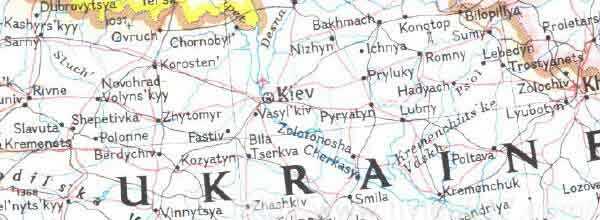
Kiev Ukraine
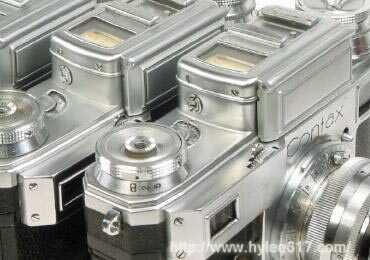
Origianl Contax & Kiev III
3) Production History
- 1947 Kiev-Contax an exact copy as made from Zeiss Ikon Contax as made from original parts. Less than 500 produced
- 1948 Kiev-48 less than 2000 produced
- 1949 Kiev-49 less than 2000 produced
- 1950-59 Kiev-2 identical to Contax, 48 and 49. The model 2 had no exposure meter, reminder dial or flash sockets. The model 2A had no exposure meter or reminder dial but incorporated a flash socket. All versions had a flip-out base stand to stabilise their use on a tabletop.
- 1952-59 Kiev-3 some with uncoupled exposure meter. The Kiev 3 had an exposure meter but no flash sockets and model 3A an exposure meter. All versions had a flip-out base stand to stabilise their use on a tabletop.
|
Model Production years - Superficial changes in appearance
|